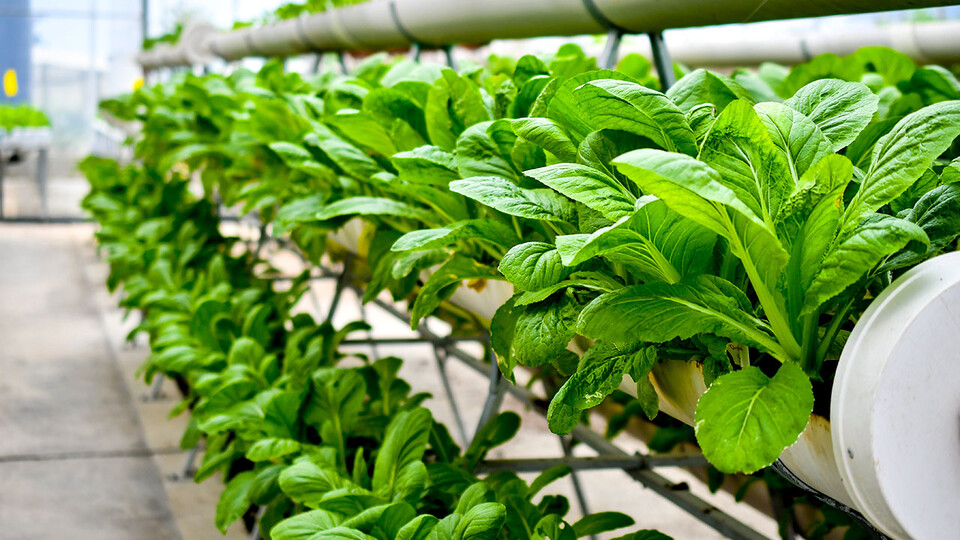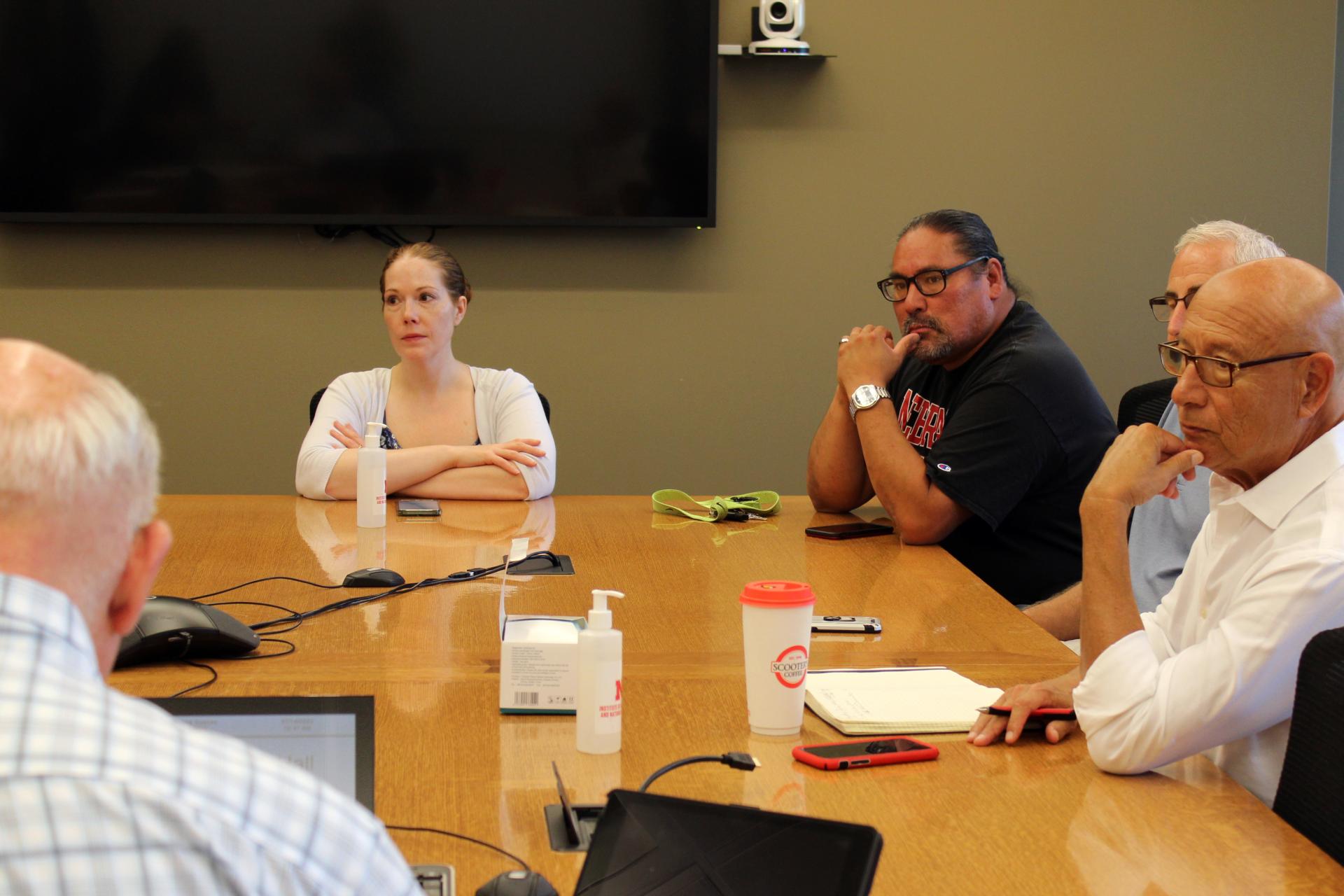
A first-of-its-kind grant will fund the building of three hydroponic greenhouses on the Omaha reservation.
Tribal Planner Mike Grant and Attorney General Theresa Rachel of the Omaha Tribe joined representatives from the University of Nebraska–Lincoln’s Rural Prosperity Nebraska initiative and the U.S. Department of Agriculture earlier this month to finalize the terms of the $671,000 agriculture grant awarded to the tribe.
“The Omaha Nation Hydroponics Initiative is on the cutting edge of nontraditional agriculture, not only for tribal communities, but for all communities here in Nebraska,” said Ted Hibbeler, a Rural Prosperity Nebraska extension educator and head of the Native American Coalition, a program that facilitates community development and leadership in Native communities and connects Native traditions and cultures with nontribal communities.
Instead of growing crops in soil, hydroponic farming is an agricultural practice that grows fruits and vegetables in sand, gravel or liquid that is infused with nutrients the plants need to grow. While the plants receive their nutrients from water instead of soil, the solutions, temperature and equipment in hydroponic greenhouses are highly monitored and controlled. This results in less water usage and greater yields than traditional soil-based agriculture.
“We can grow a crop of bib lettuce in six to seven weeks from seed to finish, whereas in soil, that same crop would take eight to nine,” said Stacy Adams, an agronomy and horticulture professor who runs the hydroponics lab at Nebraska. “Hydroponic fruits often are heavier, fleshy and less tough, making them more palatable.”
Not only will the hydroponic facility greatly increase the Omaha Tribe’s sustainable food production capacity, but it will be the first and only facility of its kind in the nation on tribal land.
“We’re well aware that we want to go through the traditional methods of crop farming — corns, beans, squash — but we also want to go into the nontraditional, which is the hydroponics,” Grant said. “We want to make sure we are taking full advantage of any opportunity that comes to us to feed our people, our families and our children. The flipside of that is they learn proper nutrition.”
The $671,000 will cover the first stage of the initiative — one year to construct the three greenhouses, which will be dedicated to leafy greens, substantial vegetables such as tomatoes and cucumbers, and herbs. The second stage, Hibbeler said, will include “training and educating (tribal members) on how to do their own hydroponics operation, so it can serve as a hydroponics business incubator for economic development for tribal members.”
“Studies have shown that when individuals better understand where foods come from and are actively engaged with their production, healthier lifestyles result,” Adams said. “In this era of colorful food packaging that masks empty sugars, fats and carbs, experiencing food production and interacting with flavorful produce could benefit the population as a whole.”
Grant said: “It’s not going to happen overnight. It’s a process. I’m hoping that within 10 years, we’ll have a strong group of the younger generation that’s really going to take the farming operations — traditional and nontraditional — seriously and understand that there’s money involved that can develop a revenue stream so they can sustain their families. That’s what we’re going to try to do. Not try. That’s what we’re going to do.”
Hibbeler sees this award as a major success but also a steppingstone.
“What we’re doing with the Omaha tribe, we can do with the Winnebago, we can do with the Santee,” he said. “You can only talk so much about things, and then something has to be done.”

[Theresa Rachel (left), Mike Grant (center) and Ted Hibbeler (right) discuss details of the USDA grant in Nebraska’s Agricultural Hall.]